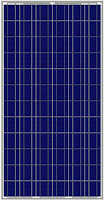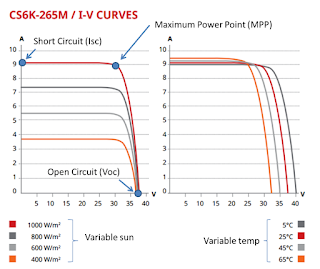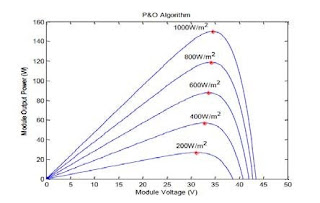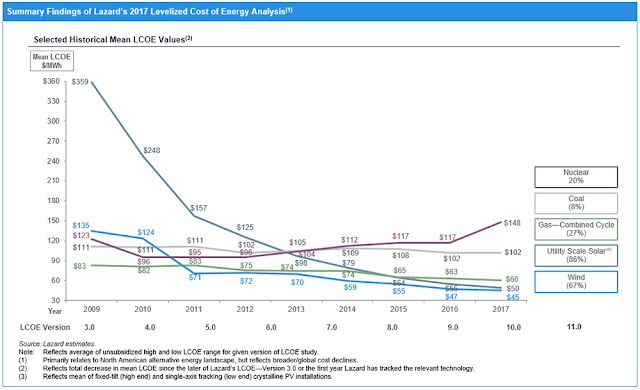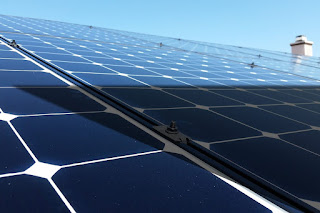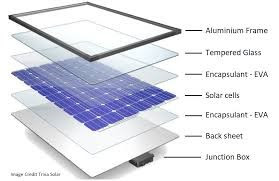Solar panels are devices that are used to convert light energy into electricity. They are made from semiconductors and they accomplish this through the photoelectric effect. Today, solar energy is one of the fastest-growing energy sources in the last few years in terms of global capacity and most of it is due to advancements in solar panel technology and continuous reductions in its cost. What Type of solar panel system is best for my home?
Types of Solar Panels: 60-cell & 72-cell
· Glass – the glass at the very front of the solar modules makes them weatherproof and protects them from impact from falling debris. These are made from 3 to 4mm thick tempered glass. Tempered glass is used because it breaks only in tiny fragments rather than large, sharp and jagged sections for standard glass. The IEC minimum standard is that the glass must be able to withstand an impact from 1-inch wide hailstones traveling at 60 miles per hour.
How do They Work?
Solar panels are made from semiconductors and this gives them their distinct characteristic of being able to convert light into electricity. Semiconductors are a class of substances that are in between conductors and insulators. This means that they have a conductivity that is in between the two.
Semiconductors also have the property of being able to make use of the photoelectric effect. This phenomenon was first observed in 1887 by Heinrich Hertz. He had a device that is called the spark gap generator where you have two small metal spheres working as a transmitter and another two small metal spheres that work as a receiver. The transmitter can induce sparks between the metal spheres of the receiver. The two metal spheres of the receiver are separated by a small air gap and this air gap must be made to be very little to be able to for it to be effective. Hertz saw that he could increase the capacity of the receiver to faithfully reproduce the sparks from the transmitter by illuminating it with visible or ultraviolet light. He and all the other physicists at that time, however, were unable to understand why and how it happened.
It was only more than 100 years later when the photoelectric effect was explained by none other than Albert Einstein. To understand it, we must first understand the basic model of an atom. Electrons inside the atom are arranged into shells with the nucleus in the center. These shells can be thought of as concentric spheres with larger spheres corresponding to higher energy levels. Electrons with the highest energy level are located in the outermost shell which is called the valence shell. Einstein proposed that light behaves as discrete particles when it hits the atom. It is then absorbed by the electron, allowing it to have a higher energy and escape its parent atom. This “free” electron can then be conducted throughout the material as electricity.
This is the exact same phenomenon that solar panels use to convert light into electricity. When solar panels are exposed to light, it creates a large number of free electrons in the semiconductor material. These free electrons are then collected at the solar panel terminals to create voltage and current.
Types of Solar Panels: Mono, Poly & Thin Film
There are 3 types of solar panels that are available in the market today and these are: 1.) Monocrystalline, 2.) Polycrystalline and 3.) Thin-film solar panels. The first two types are both made from crystalline silicon. Inside crystalline silicon, the silicon molecules form themselves into a neat crystal arrangement all throughout the material. The only difference between the two is the purity of the crystalline silicon used. This simply means the absence of other types of atoms inside the material. The purity of the used silicon material is important as a higher purity also corresponds to a higher efficiency.
Monocrystalline Solar Panels
Monocrystalline solar panels can easily be distinguished from their black color. If you also take a closer look, you will see that it has an even coloring and a uniform look. This is because monocrystalline solar panels are made from silicon that only has one crystal structure throughout the material, hence, the name monocrystalline. Because they are made from a higher grade of silicon, they also have a higher efficiency. They also have a lower temperature coefficient, which means that they perform better at higher temperatures. They are also more expensive, however, since the processes that are used to enhance the purity of silicon are expensive. For actual solar PV installations, the added cost of using monocrystalline solar panels can be worth it as they let you conserve space. Because of its higher efficiency, you will need to install less solar panels to produce the same amount of energy. This is very important when installing for buildings or houses with a limited roof space.
Polycrystalline Solar Panels
Polycrystalline solar panels usually come in color blue. It also has an uneven coloring which shows the different crystal structures inside the material. Polycrystalline silicon is also simpler to manufacture and therefore, costs less.
This type of solar panel tends to have a lower efficiency because of the lower silicon purity. They also have a higher temperature coefficient compared to monocrystalline solar panels. This means that they perform worse than monocrystalline solar panels at higher temperatures. However, in actual solar PV installations, the difference between the two is minor and there are more important things that homeowners need to take into account like brand, model, logistics, etc.
Thin Film Solar Panels
Thin film solar panels are made by depositing one or several thin layers of semiconductor material onto a substrate. They have the lowest efficiency compared to the first two types and because of this, they are not commonly used in residential, commercial, or utility-scale applications. However, they have a distinct advantage of being flexible, allowing them to be used in applications where the first two types can’t be used.
Types of Solar Panels: 60-cell & 72-cell
There are generally two types of monocrystalline and polycrystalline solar panels available in the market today. These are 60-cell and 72-cell solar panels. These numbers correspond to the number of solar cells connected in series inside the solar panel. Solar panels are composed of smaller units connected in series, which are called solar cells. Solar cells typically produce a very low voltage and they are connected in series to produce a usable voltage level.
60-cell solar panels usually have power ratings of 230W-270 while 72-cell solar panels are usually in the range of 280W-320W. Because of having more cells in series, 72-cell solar panels are bigger in size, but most manufacturers just offer them at the same price per watts. The choice of which type of solar panels to use, therefore, lies solely on the design of the solar PV system to be installed.
Solar Module Properties: IV Curve
The IV curve is the set of all points where the solar panels can operate. These points correspond to the current and voltage values that they can produce at any given input value. The IV curve is very important as it describes how the solar panel will operate at any given input irradiance and temperature.
The IV curve is where we derive the most important operating parameters of the solar panels which are the: open-circuit voltage (Voc), the voltage at maximum power point (Vmp), short-circuit voltage (Isc) and current at maximum power point (Imp). These are the main parameters used in the design of solar PV systems. The IV curve of a solar panel is given by the equation:
This equation is used in some solar PV simulation software to determine the output parameters of the solar panels at any given point in time.
Solar Module Properties: Power Curve & Maximum PowerPoint
From the IV curve, we can derive another curve that tells us the power output of the solar panel at any given input parameters. We can see that the power output of a solar panel is 0 at both the open-circuit voltage and the short-circuit current. We also see the power output at its peak at a point called the maximum power point. The voltage and current values at this point are called voltage at the maximum power point and current at the maximum power point, respectively.
On a PV array, each solar panel is “forced” by the inverter to operate at its maximum power point because this is where the solar panel is at its highest efficiency. This is the main reason why different brands and models of solar panels are never mixed together in a PV array. They may have different maximum power points which means that they must operate at different voltages and currents to produce maximum power. The inverter, however, can only choose one operating point for all solar panels and it chooses the point where PV array production is at its maximum. This means that each solar panel will have to operate outside of its maximum operating point and will, therefore, be less efficient.
Even in a PV array with a uniform brand and model of solar panels, imperfections in the manufacturing process may also introduce differences in the maximum power points in each solar panel. Similar to the situation explained in the above paragraph, each solar panel will operate at a slightly different point than its maximum power point. Because of this, the total maximum output of the PV array is effectively reduced. This is called mismatch loss and it is also considered by the top PV simulation programs when calculating energy yield.
Solar Module Properties: Efficiency
The efficiencies of commercially available solar panels are usually in the range of 15-20%. As with any other energy source, it is the ratio of input energy to its output. For solar panels, the input is the insolation that the solar panel receives.
Compared to other energy sources, solar energy has the lowest efficiency. But comparing energy sources through their efficiencies is comparing apples and oranges because each energy source has a different input. To make an accurate comparison, it makes sense to use LCOE instead. LCOE stands for the levelized cost of energy. It simply means the cost of power produced by any energy source over its lifetime. The simple way to calculate the LCOE is to divide the total cost of constructing the power plant by the total amount of energy that it will produce over its lifetime.
According to the 2017 edition of Lazard’s annual Levelized Cost of Electricity (LCOE) study, solar and wind already have a lower LCOE than all the other energy sources because of their continuously plummeting costs.
The main reason why this is the case is because solar energy is technology-based rather than fuel-based like other fossil fuel sources. For fuel-based sources, improvements can only come through how efficiently we can extract energy from our fuel source. For a technology-based energy source like solar, however, its improvement is exponential This is similar to Moore’s Law for integrated circuits (IC). Not only that, with improvements in the manufacturing processes used, the total cost is also continuously going down.
Solar Module Properties: Temperature Characteristic
Semiconductors have a negative temperature coefficient which means that their resistance increases with an increase in temperature. For solar panels, this corresponds to a decrease in total power output. If we look at the IV curve at different operating temperatures, we can see that the curve moves slightly to the left with increases in temperature. This means that the solar panel’s operating voltage decreases slightly as the cell temperature increases. This is contrary to popular belief that solar panels convert heat to electricity and therefore, will produce more energy during hotter ambient temperatures.
There are basically only two input parameters that affect the solar panel’s output, and these are irradiance and cell temperature. This is why for solar farms and some commercial solar PV systems, weather sensors like pyranometers (measures irradiance) and module temperature sensors. The data collected from these sensors can then be used to get the expected energy production and compared to its actual production to measure its performance.
Effect of Shading / Solar Module String Characteristics
Solar panels are connected in series to form a string to increase its voltage to a level that is compatible with the inverter input. And since they are in series, they can only produce a single value of current. If one solar panel in the string is subjected to shading, it effectively reduces the amount of irradiance on its input. The IV curve of that solar panel is moved downward, corresponding to a decrease in output current. When this happens, all other solar panels in the string are also forced to decrease their output current to match the shaded solar panel’s output.
Effect of Shading / Solar Module String Characteristics
Solar panels are connected in series to form a string to increase its voltage to a level that is compatible with the inverter input. And since they are in series, they can only produce a single value of current. If one solar panel in the string is subjected to shading, it effectively reduces the amount of irradiance on its input. The IV curve of that solar panel is moved downward, corresponding to a decrease in output current. When this happens, all other solar panels in the string are also forced to decrease their output current to match the shaded solar panel’s output.
Therefore, solar panels that are connected in a string only perform as well as the least performing solar panels on the string. In short, shading on one solar panel effectively affects every other solar panel on the string.
The same thing happens for the solar cells that are also connected in series to form the solar panel. Even when only one portion of the solar panel is subjected to shading, it also affects all the other solar cells. Because of this, shading on a small area of a solar panel results in a disproportionate amount of reduction in power output.
Solar Module Physical Characteristics
Solar Module Physical Characteristics
Solar modules are exposed to the sun, which means that they have to withstand extreme weather conditions like hot and cold ambient temperatures, rain, snow, and hail for a lifetime of 25 years. To do this, the solar cells inside the solar panels come with several layers of protection against the outside elements. These are:
· Glass – the glass at the very front of the solar modules makes them weatherproof and protects them from impact from falling debris. These are made from 3 to 4mm thick tempered glass. Tempered glass is used because it breaks only in tiny fragments rather than large, sharp and jagged sections for standard glass. The IEC minimum standard is that the glass must be able to withstand an impact from 1-inch wide hailstones traveling at 60 miles per hour.
· Aluminum Frame – The aluminum frame protects the edge of the laminate section containing the solar cells while also providing a solid structure to mount the solar cells. The frame is made from aluminum because of its lightweight characteristics. The solar modules are mounted in position by clamps installed on the frame. The frame is also grounded in the installation for protection.
· EVA film – EVA (ethylene vinyl acetate) is a highly transparent plastic used to encapsulate solar cells. It has 2 functions, as shock absorption from external impact and as another layer of protection from temperature moisture, and dirt ingress.
· Backsheet – the back sheet is located on the rearmost part of the solar module for mechanical protection and electrical insulation.
· Backsheet – the back sheet is located on the rearmost part of the solar module for mechanical protection and electrical insulation.

